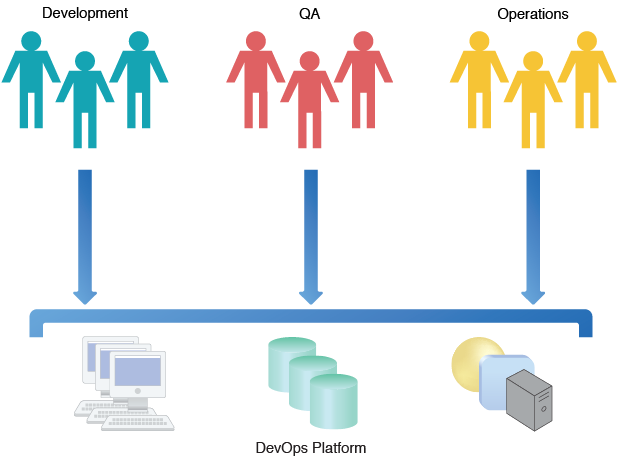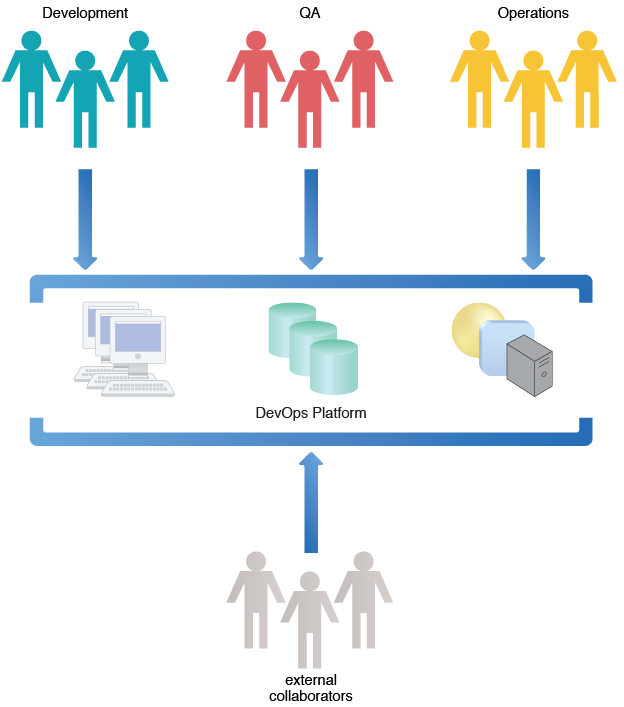DevOps Mechanisms, Metrics, Tools > Tools
Understanding the DevOps Platform and Toolchain
DevOps introduces a central platform comprised of standardized tools for use by all project team members and across project teams, where applicable. This ensures a level of consistency that supports an increased quality of activities carried out during a project lifecycle, as well a level of stability required to establish automation throughout lifecycle stages.

A DevOps platform can further expose standardized APIs for access by external parties that may be involved with the DevOps project team.

The primary objective of establishing a central DevOps platform environment is to avoid or even eliminate the fragmented usage of disparate tools across different project teams and groups. By ensuring that project team members use the same tools wherever applicable, the following significant benefits are attained:
- the same tasks are carried out in a consistent manner, even when by different groups or teams
- data collected as a result of using tools and systems for different tasks is consistent and compatible, even when tools and systems are used by different groups or teams
- data collected or generated by tools and systems can be stored in a centralized location and made accessible to different groups and teams
- governance precepts, policies and other regulatory controls can be applied more consistently and predictably across the same tools and systems, even when used by different groups and teams
A DevOps platform can further enable the integration of processes and supporting tools and data sets. Many tools that are part of a DevOps platform can be run as a hosted solution and be made available via the Web.
The following are common DevOps tools: